News
Welcome to NanED news page where you can find out about the Nan ED project's progress as well as events, and related news at a national and international level.
Funded by the European Union
Welcome to NanED news page where you can find out about the Nan ED project's progress as well as events, and related news at a national and international level.

IIT
Our coordinator Mauro Gemmi was guest the 9th of October to the Italian National Radio, RAI Radio3 during the program Radio3Scienza. Invited to present the recent Nobel prize in chemistry, as expert in the field, he had the opportunity to disclose to the Italian public the scope and the results of NanED project. He showed how in our project we are exploiting 3D ED to solve the crystal structure of nanocrystalline MOF (the Nobel prize was awarded for the discovery of MOFs), synthesized @IIT starting from natural ligands using green chemistry. A recent paper published by the IIT Electron Crystallography research line, which was broadcasted by the IIT OpenTalk web channel and reached the important ANSA press agency web site, has drawn such a remarkable attention on the news, that the Italian journalists of Radio3 decided that NanED research was worth for an important program such as Radio3 Scienza.
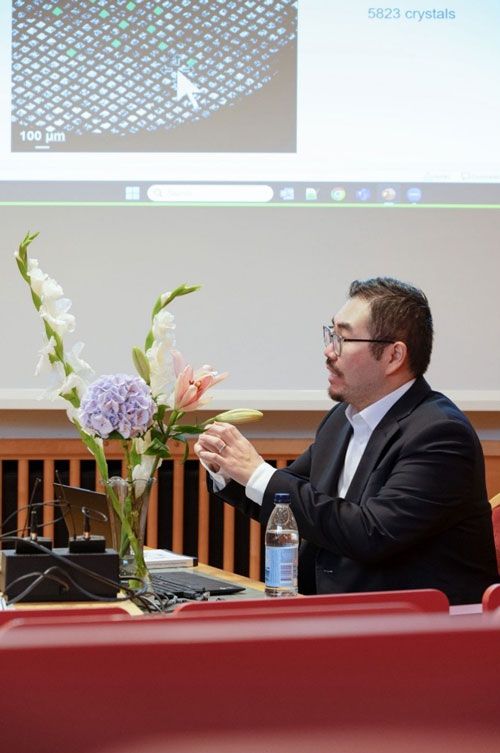
SU
The 17th of October 2025 at Stockholm University Sweden our ESR Lei Wang successfully defended his PhD thesis on “Structure determination of proteins and protein-ligand complexes using electron diffraction”. Supervised by Hongyi Xu, Lei had a quite hard time studying the very beam sensitive and complex structures of proteins both in their native states and how they modify when they bind to a pharmaceutical compound. To successfully study these elusive structures in nanocrystalline form using 3D ED, Lei had to develop specific sample preparation methods that would not damage these very fragile crystals during plunge freezing, but also data collection routines that could face their strong beam sensitivity.
Well done Lei, congratulations from the entire NanED team!
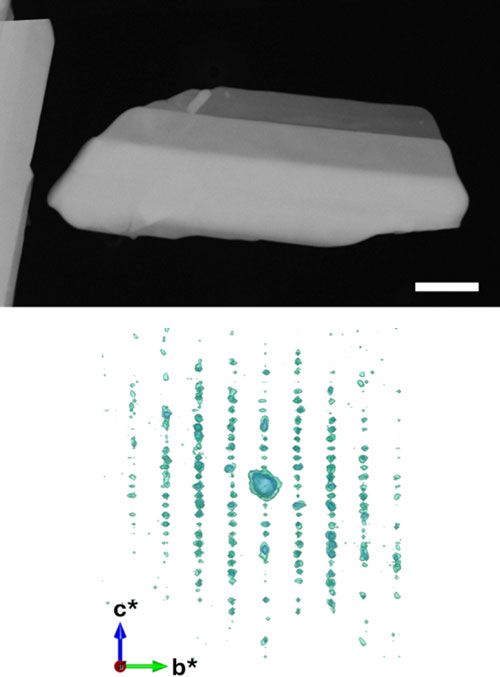
IIT Papers
A new paper on “Structural Tuning of Layered Perovskites for Enhanced Broadband Emission at Room Temperature” appeared on Small Structures. The paper is as internal collaboration of several IIT groups lead by Milena Arciniegas involving NanED researchers on the characterization of hybrid perovskites. 3D ED has revealed how this kind of materials, based on an inorganic backbone of lead bromide with interlayers organic linkers (in our case benzylamine), arrange their structures in discontinuous octahedral PbBr6 layers, which are corrugated. The location of the organic part could not be determined since the experiments were extremely challenging due to the very high beam sensitivity of the samples.
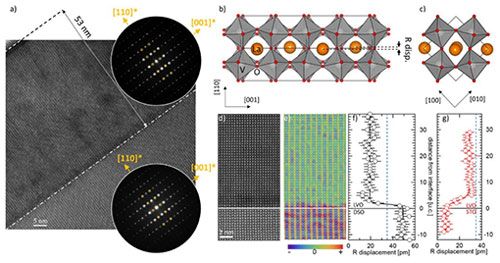
CNRS FZU Papers
A new paper from the NanED CNRS and FZU groups on a novel method for determining the crystal structure with a very high spatial resolution using SPET has been published on Small. SPET, acronym for Scanning Precession Electron Tomography, enables the collection of 3D ED data from multiple adjacent regions of interest by combining scanning and rotation. We can think of SPET as a 5DSTEM where the 5th dimension is given by the angular rotation. In SPET a complete data set is formed by a 3D ED data collection per scanning point. The authors show how this quite large ensemble of data sets can be collected, properly organized and finally analyzed to retrieve accurate structure details with a spatial resolution of the order of few nanometers. This methodology is applied to the characterization of a 50 nm-LaVO3 thin film grown onto (110)-oriented DyScO3 by molecular beam epitaxy. SPET allows to follow the structure relaxion of the film away from the substrate not only in terms of unit cell parameters but also in term of structural tilting of VO6 the octahedra.
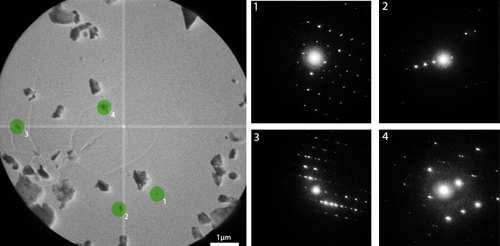
IIT Papers
A new paper from Moussa Faye PhD of IIT group came out recently on Journal of Applied Crystallography! The paper describes the new software LibraEDT for automatic 3D ED data collection. The software developed for the TEM Zeiss Libra 120, integrates into the microscope the direct electron detectors Timepix1 of ASI, allows to control all the parameters of a 3D ED data collection and, most important, can track the crystal movement during the sample holder rotation. In this away the small mechanical instabilities of the goniometer can be compensated by automatically following the crystal by shifting the beam and several data collections on crystals as small as few hundreds of nanometers can be performed in every TEM session. The tracking system is optimized to minimize the electron dose on the crystal and is very effective in case of very beam sensitive samples. As test cases the structure solution with 3D ED data collected with LibraEDT on the known pharma compound lamotrigine and on a new Zn based protocatechuate MOF are presented. LibraEDT is used and tested every day in the IIT lab in CMI center based in Pontedera, Italy, by all the researchers that collect 3D ED data.
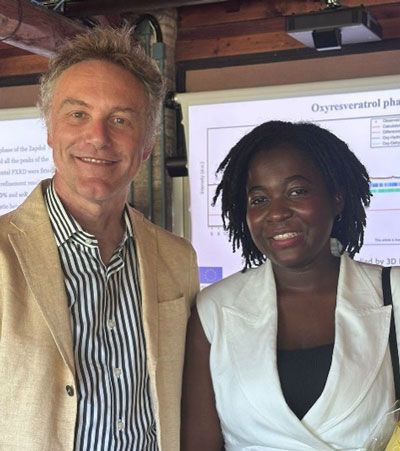
IIT
The 30th June 2025 at Parma University in Parma Italy our ESR Vincentia Emerson Agbemeh successfully defended his PhD thesis on “Electron crystallography of organic nanocrystals” with the final mark “very good”. Supervised by Mauro Gemmi, Vincentia studied several organic crystals using 3D ED and solved their structure. She determined two new polytypes of the oxyresveratrol natural product one anhydrous and one di-hydrated. The di-hydrated could be observed in the TEM only if the sample was cryoprotected from the vacuum effect. She also was able to solve, with 3D ED in continuous rotation the structures of three new oxyresveratrol cocrystals (with urea, nicotinamide and iso-nicotinamide as co-formers) synthesized via mechanochemistry. All the three structures were also dynamically refined.
Well done Vincentia, congratulations from the entire NanED team!

CNRS IIT UA FZU Papers
A new paper has been published by the NanED team lead by Phillippe Boullay and the PhD Erica Cordero-Oyonarte of Crismat-CNRS institute on ACSNano titled: “3D Electron Diffraction on Nanoparticles: Minimal Size and Associated Dynamical Effects”. The paper is a wide NanED collaboration involving the UA, FZU and IIT beneficiaries and the ELETTRA synchrotron partner. In the papers the researchers seek the bottom limit in crystal size for the application of 3D Ed methods. They found that crystals in the range 50-100 nm can be studied routinely, and their crystal structure can be determined and easily refined. The method can be pushed further and used on nanoparticles as small as 10 nm. For crystals in the of 10-100 nm in size kinematical refinement gives results in the same range of accuracy as PXRD, while dynamical refinement significantly improves the final model, showing that in small crystals dynamical scattering is still significative. The studied nanocrystalline materials are: TiO2 brookite nanorods, In Sn oxide ITO, MgTi2O5. The results are based on 3D ED data collected on several labs of the network: CNRS, IIT UA.

IIT
The 22nd May 2025 at Parma University in Parma Italy our ESR Moussa Diame Faye Diouf successfully defended his PhD thesis on “Electron Nanocrystallography of Metal-Organic Frameworks” with the final mark excellent. Supervised by Mauro Gemmi, Moussa designed a dedicated software (LibraEDT) for performing automatic 3D ED data collection on a Zeiss Libra 120 tracking the crystal movement during rotation. With the use of this software Moussa solved many new MOF structures. By setting up a dedicated sample preparation procedure that could prevent MOF from activation in the TEM vacuum, he solved the structure of the open and closed form of a MOF based on a peptide ligands. Finally, he successfully demonstrated the possibility to solved new MOF structures with a Serial ED approach.
Well done Moussa, congratulations from the entire NanED team!

UBA
The 6th May 2025 at University of Basel in Basel Switzerland our ESR Senik Matinyan successfully defended his PhD thesis on “Ultrafast data collection, processing and deep learning enhanced analysis of single molecule electron diffraction” with the highest distinction, summa cum laude. Supervised by Jan Pieter Abrahams Senik started to apply AI to detect the presence of single particle through their diffraction and also to phase their diffraction to reconstruct their shape without passing from imaging.
Well done Senik all the NanED team is proud of you!

SU Papers
A new paper has been published on Biorxiv by NanED PhD student Lei Wang of Stockholm University titled: “AutoLEI: An XDS-based Graphical User Interface for Automated Real-time and Offline Batch 3D ED/MicroED Data Processing”. The paper describes a new XDS-based graphical user interface for automated real-time and offline batch 3D ED/MicroED data processing (AutoLEI) that has both offline and real-time data processing capabilities. In the paper the authors illustrate the functionality of AutoLEI through four examples which include small organic molecules, metal-organic frameworks (MOFs), and proteins, showcasing the versatility and efficiency of the GUI in various applications. The AutoLEI GUI is available from Zenodo NanED community together with the datasets collected on the structures reported in the paper.
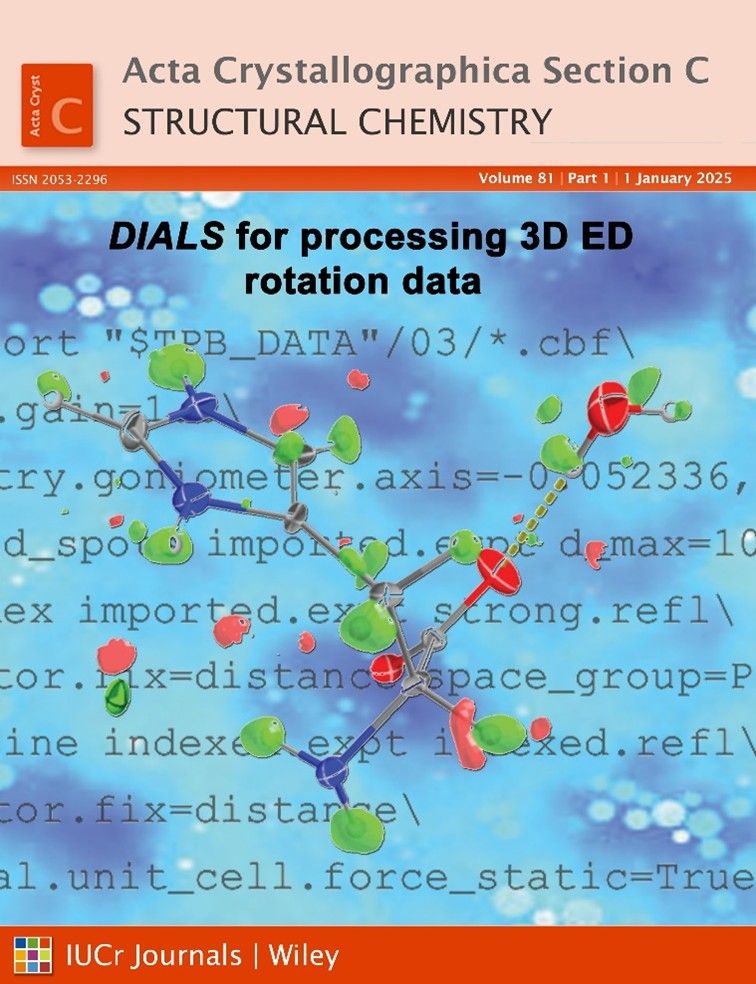
SU Papers
A new paper has been published by the NanED PhD student Angelina Vypritskaia of Stockholm University on Acta Crystallographica C titled: “How to use DIALS to process chemical crystallography 3D ED rotation data from pixel array detectors”. In the papers the researchers explain how they have modified the software DIALS, originally developed among others by D. Watermann of UKRI for data analysis of x-ray diffraction, for the analysis of continuous rotation ED data. The full data analysis with DIALS was successfully tested on one of our round robin samples, natrolite, and on two organic crystals histidine and 1,3,5-triphenylbenzene. The data were collected with a standard TEM set up and with the innovative electron diffractometers Eldico ED-1 and Rigaku Synergy-ED, demonstrating the high flexibility of the software. The article was awarded by the cover of the January issue of Acta Crystallography C.
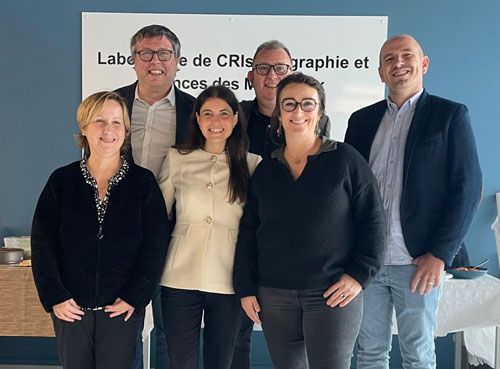
CNRS
The 7th of November 2024 at CNRS-Crismat Laboratory in Caen, France, our ESR Erica Cordero-Oyonarte successfully defended her PhD thesis on "Electrοn crystallοgraphy οf nanοparticles", becoming “Docteur de l’Université de Caen Normandie spécialité Chimie”. Supervised by Philippe Boullay, Erica has investigated the minimum crystal size still suitable for a 3D ED experiment. She has demonstrated that it is possible to collect 3D ED data on nanoparticles as small as 10 nm obtaining a very detail crystal structure using dynamical refinements on these data sets. Remarkable examples of what can be done are the detectability and refinement of lithium sites in LixTO2 nanoparticles or the successful refinement of the partial occupancy in MgTi2O5 nanoparticles.
Well done Erica all the NanED team is proud of you!
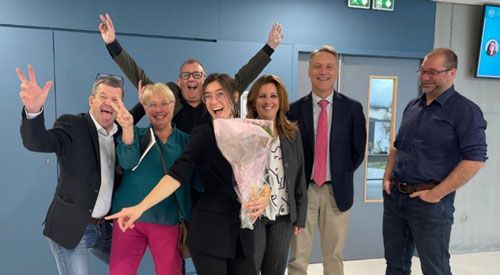
CNRS
The 30th of October 2024 at CNRS-Crismat Laboratory in Caen, France, our ESR Sara Passuti successfully defended her PhD thesis on "Electron crystallography of nanodomains in functional materials", becoming “Docteur de l’Université de Caen Normandie spécialité Chimie”. Supervised by Philippe Boullay, Sara has demonstrated that 3D ED can be used to obtain highly accurate structural data with very high spatial resolution. She has been able to follow the structure relaxation of an epitaxial thin film on its first 20 nanometers from the interface with the substrate. She also observed structure variations on a few nanometers scale in grains of a polycrystalline ceramic compound. All these results are new and unexpected at the accuracy level attained and open a new field of investigation. Well done Sara all the NanED team congratulates you on this remarkable achievement.

FZU PAPERS
A new paper has been published by the NanED researchers of FZU on Nature Communications titled: “Ionisation of atoms determined by kappa refinement against 3D electron diffraction data”. The group lead by Lukas Palatinus with the participation of NanED PhD students Ashwin Suresh and Chintakindi Hrushikesh demonstrated how, by going beyond the independent atom model (IAM), 3D ED is able to probe the ionization state of the atoms. The authors used the kappa refinement which introduces charge transfers between atoms while assuming a spherical model of the electron density. Five different samples were analyzed: quartz, natrolite, borane, lutecium aluminium garnet, and caesium lead bromide. The dynamical refinements carried out in this way improved the structure with respect to IAM refinement, giving access to charge density information and opening the route to a full multipolar refinement of the electrostatic potential.

SU
Xiaodong Zou, NanED supervisor won the IVA Gold Medal 2024 a prestigious award of Royal Swedish Academy of Engineering Sciences which is awarded every year to people who, through outstanding deeds, have contributed to creating a better society. We read on the Academy motivations that Xiaodong was selected "for her contribution to developing methods for rapid structural determination of small crystals of inorganic, porous and organic materials and for her contribution to the development of porous materials for more efficient chemical and fuel production and carbon capture. She has shown how purposeful realization of a scientific vision can be combined with committed supervision and mentoring of a large number of doctoral students and young researchers”.
All the NanED team, supervisors, researchers and PhD students, congratulate Xiaodong for this remarkable achievement!
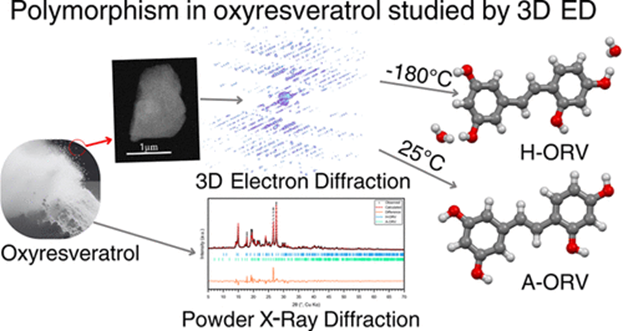
IIT Papers
A new paper has been published by the NanED researchers of IIT on ACS Omega titled: “Polymorphism in oxyresveratrol studied by 3D ED”. The group lead by Mauro Gemmi with the participation of NanED PhD student Vincentia Emerson Agbemeh discovered two new polymorphs of the natural compound oxyresveratrol directly in the batch purchased from a chemical company. One of the two is anhydrous and could be easily characterized in the TEM, while the second one contains two molecules of water in the asymmetric unit and was very elusive. In the TEM high vacuum was always transforming into the anhydrous form so its presence could only be detected from powder x-ray diffraction, but its structural characterization was impossible. The researchers had to prepare the sample with a cryo-plunging procedure that was sealing the nanocrystals in amorphous ice to prevent de-hydration in the TEM column. In this way they could collect 3D ED on the hydrated form of oxyresveratrol and solve its structure.
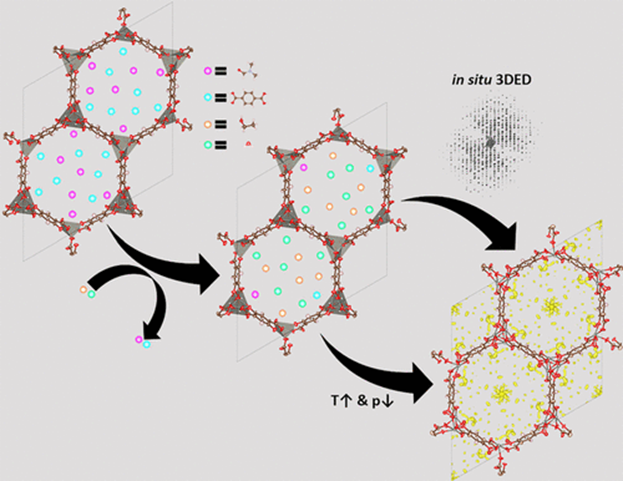
UA Papers
A new paper has been published by the NanED researchers of EMAT on Chemistry of Materials titled: “In Situ Study of the Activation Process of MOF-74 Using Three-Dimensional Electron Diffraction”. The group lead by Joke Hadermann with the participation of NanED PhD student Amirhossein Hajizadeh studied in-situ inside a TEM the process in which a MOF releases the residual solvent hosted in its pores to become activated, which means ready to function as an absorber or a catalyst. For the first time the authors have been able to follow this process at high temperature using 3D ED on nanocrystalline grains of the MOF-74 a carbon dioxide absorber. The use of a state-of-the-art direct electron detector enabled rapid acquisition and minimal exposure times, therefore minimizing beam damage of the very electron beam-sensitive MOF-74. The collected data allowed the authors to claim that also after high temperature exposure the pores of the MOF remain filled with some atoms which can impede the effective absorption of gases.
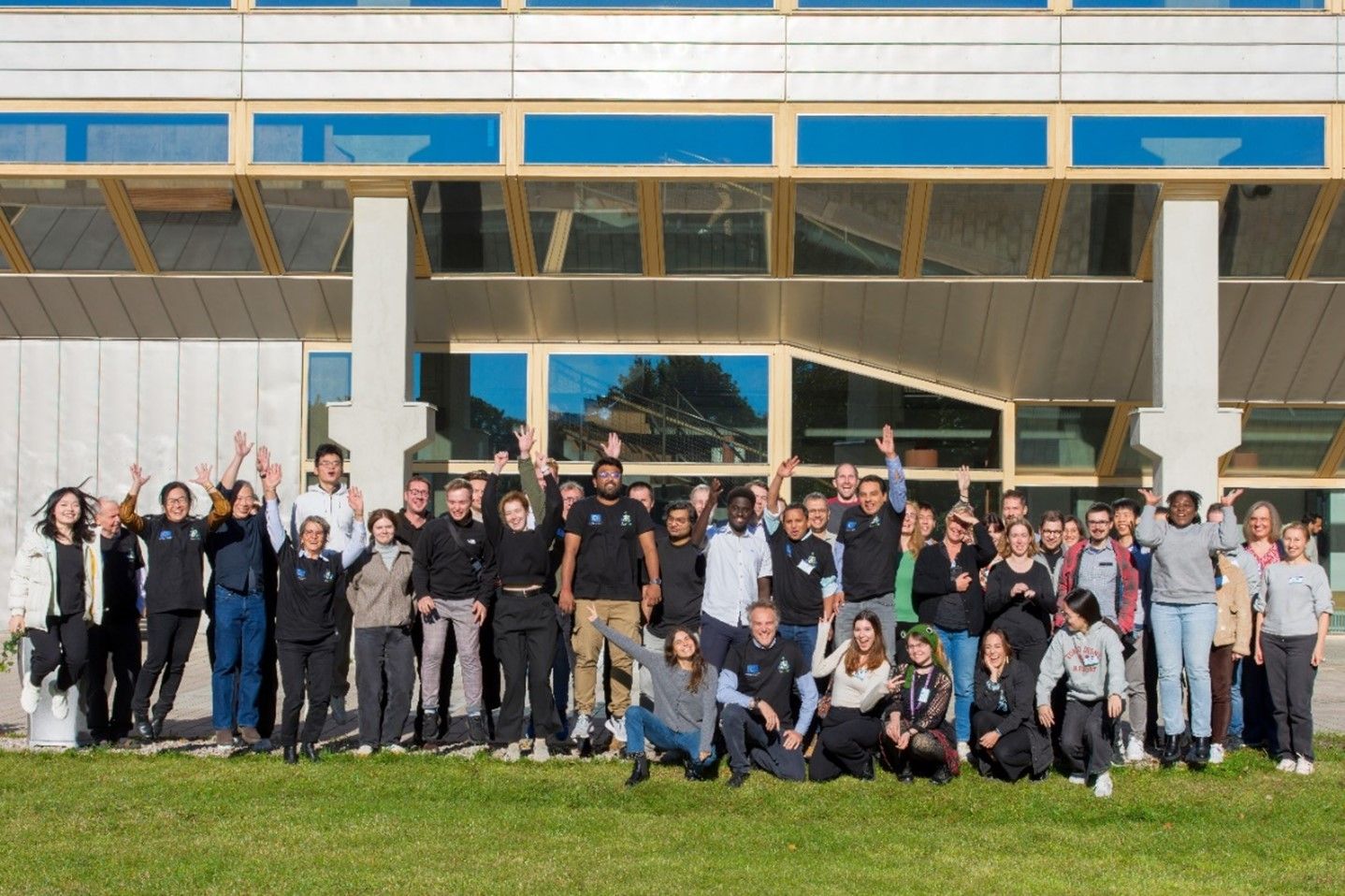
Workshop SU
From the 3rd to the 5th of October NanED had its final meeting at the Arrhenius Laboratoriet in the Frescati Campus of the Stockholm Universitet Sweden. The meeting was meant to make the final point of the project and to give to all the PhDs the possibility to present all the results of their studies in a kind of “pre defense”. The coordinator and the supervisors in charge of the different work-packages have illustrated the actual stage of development of the project, the milestones achieved and the more to come. Most of Naned partners and several local researchers and students of the Department of Materials and Environmental Chemistry attended the event. The meeting had also two international and one local guests. Prof. Tamir Gonen of UCLA gave a talk on “ A MicroED solution to the MP20 enigma” with an historical point of view of the development of the use of electron diffraction for macromolecular studies from the first 2D structure solutions to MicroED. Prof. Paulina Dominiak of University of Warsaw gave a talk on ““Multipolar scattering factors for 3D electron diffraction” where she explains how 3D ED is sensitive to charge density and can be used to study bonding in molecular crystals. Finally Gerhard Hofer of Stockholm University gave a talk on “Serial electron diffraction” to explain the novel method develop in Stockholm for collecting a large amount of 2D ED patterns on extremely beam sensitive samples like macromolecules. All the participants had also the opportunity to visit all the facilities of the Electron Microscopy Center of Stockholm University.
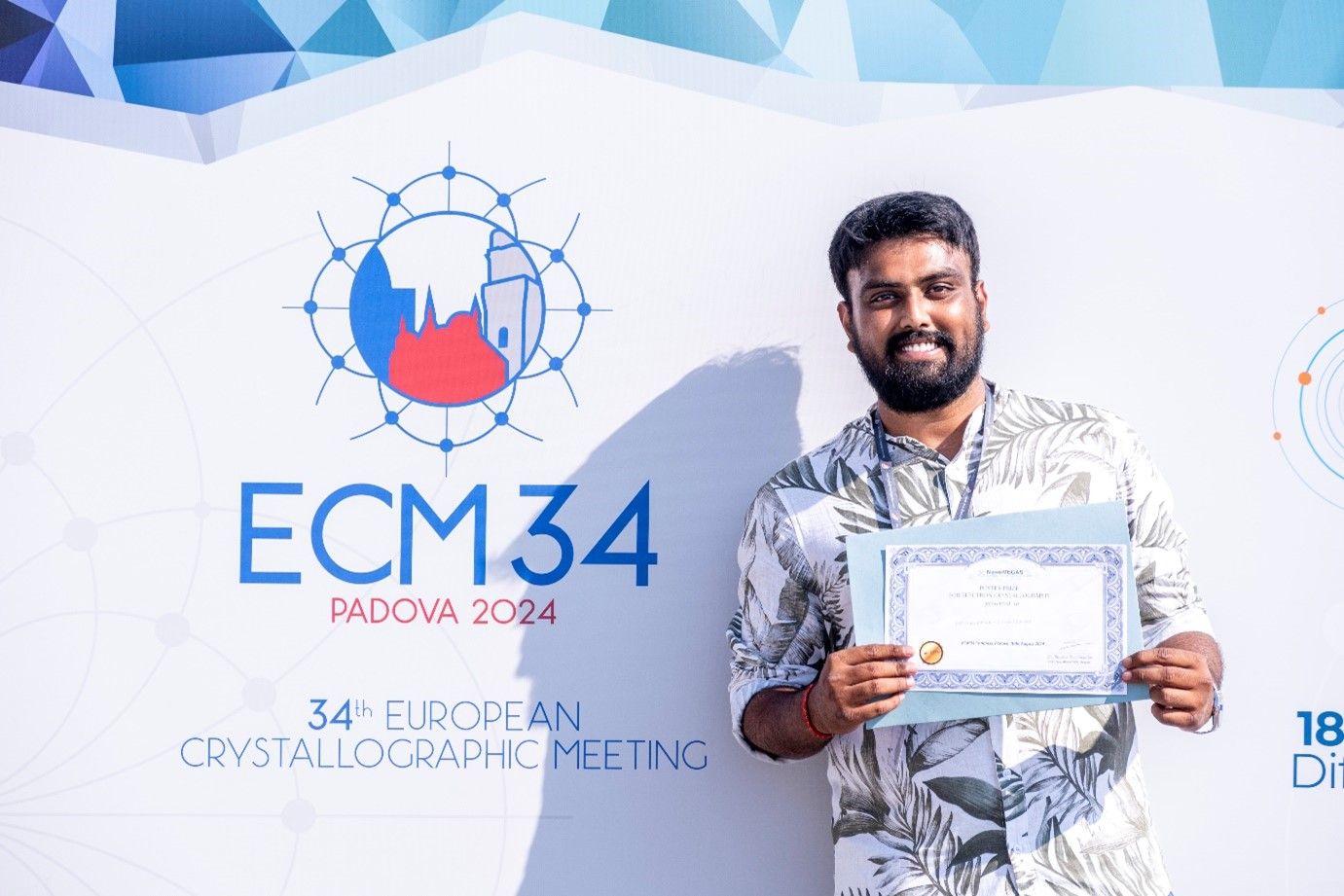
Workshop FZU
NanED PhD student Hrushikesh Chintakindi won the poster prize sponsored by Nanomegas company at ECM34! The poster of Hrushikesh was about “Analysing the frame scaling and orientation matrix in the presence of appreciable dynamic diffraction effects utilizing simulated 3D ED data” and describes how dynamical effects strongly affect diffraction patterns that are close to zone axis compared to more random orientation. Hrushikesh proved that both experimental and through dynamical simulations in which the amount of dynamical scattering was tuned by reducing the occupancy factor of each atom. CONGRATULATION HRUSHI!!!!!!

Workshop JGU FZU UBA CNRS
NanED participation to the last ECM34 meeting in Padova Italy has been amazing. ECM is the annual congress organized by the European Crystallographic Association where all the latest results in crystallography are usually presented. NanED Phd students had a great success with 4 oral contribution and three posters one of which won the Nanomegas poster prize.
Senik Matinyan had an invited talk on “Advancing protein complex analysis with AI and electron diffraction” in the session on AI, software developments and Machine learning applied to MX and CryoEM.
Erica Cordero-Oyonarte had an oral in the session “when can ED challenges XRD in small molecule crystallography?”. Erica’s talk was on 3D electron diffraction for accurate structure analysis of nanoparticles and described the interplay between minimum crystal size and accurate dynamical refinement with 3D ED data.
Sara Passuti had an oral on “Structural analysis of functional materials through Scanning Precession Electron Tomography (SPET)” in the session on advanced and new techniques to study inorganic crystal structures. Sara explained how we can have accurate structure refinement from 3D ED data on both a profile along a line crossing a thin film or on a 2D area. This is the first step towards structure mapping at the nanoscale.
Ashwin Suresh had an oral on “Atomic ionization determined by dynamical kappa refinement against 3D electron diffraction data” in the session on electron diffraction joining forces with quantum crystallography towards materials science and application. Ashwin have shown amazing results of the detection of charge density effects with 3D ED data.
NanED PhD students presented also three posters:
Marco Santucci: “PyFast-ADT: python-driven 3DED data collection and automatic crystal tracking”
Hrushikesh Chintakindi: ”Analysing the frame scaling and orientation matrix in the presence of appreciable dynamic diffraction effects utilizing simulated 3D ED data”
Laura Gemmrich Hernandez: “Multi method study of calcium-aluminate cement hydration and its crystal structures”
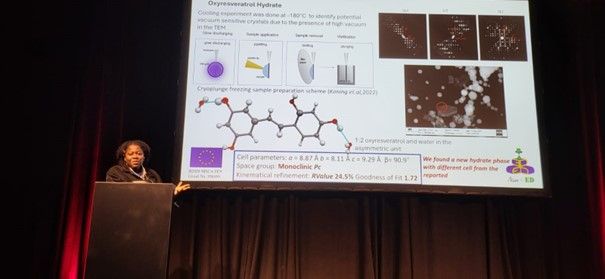
Workshop IIT
NanED participation to the EMC2024 in Copenhagen Denmark congress was numerous. EMC congress joins together all European microscopists to discuss the latest novelties in the field. Apart from several talk delivered by NanED supervisors, Philippe Boullay, Lukas Palatinus and Ute Kolb, NanED PhD student Vincentia Emerson Agbemeh had an oral on “structural study of polyphasic mixtures using 3D Electron Diffraction (3D ED); a case study of oxyresveratrol”. Vincentia summarized in the talk the results published in a recent paper. She showed how by using 3D ED it is possible to study the crystal structure of a nanocrystalline hydrated natural compound by cryo-protecting it in amorphous ice. As a case study she reported the discovery of two new polymorphs of oxyresveratrol, directly identified in the sample batch bought from a chemical company.
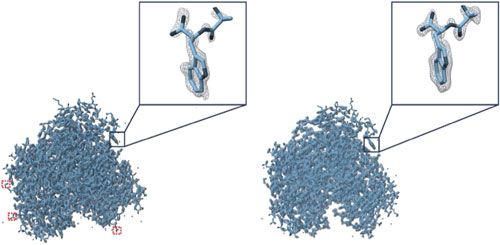
Papers UBA
A fourth paper from Senik Matinyan, NanED PhD student, came out recently on Frontiers on Molecular Biosciences ! In this study, Senik and co-workers present DiffraGAN, a machine learning tool designed to enhance the analysis of protein structures through diffraction methods, which struggle with the loss of phase information. DiffraGAN uses a combination of high-resolution diffraction data and low-resolution images to effectively reconstruct protein structures. Our method leverages a type of artificial intelligence known as a conditional generative adversarial network (cGAN) to predict the missing information from these datasets. We tested DiffraGAN with simulated data, showing that it can accurately phase the high-resolution diffraction data using noisy, low-resolution images. This approach may significantly improve the accuracy and efficiency of protein structure determination in structural biology.
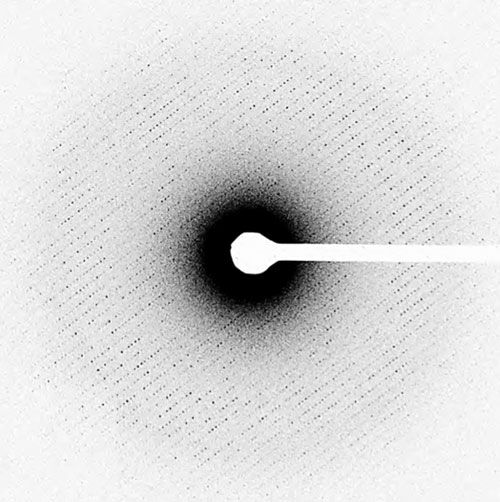
Papers IIT
A new paper by our coordinator Mauro Gemmi appeared recently on Acta Crystallographica C. This paper is a scientific commentary on the paper by Aragon et al. (2024) which discusses the results of a round table on 3D ED/MicroED held during a symposium at the National Center for CryoEM Access and Training housed at the New York Structural Biology Center. In the commentary Dr. Gemmi, in agreement with the above paper, points out how the training of electron crystallographers is one of the bottlenecks that hampers a proper diffusion of the technique. NanED was constructed for this purpose and many crystallographic associations are supporting our view. Both ECA and IUCr through their dedicated organs (the SIG04, Special Interest Group on Electron crystallography for ECA; the CEC Commission on Electron Crystallography for IUCr) sponsor every year the organization of dedicated electron crystallography schools. This year there will be one, Elcrys24, as side event of the ECM34 congress in Padova Italy, while next year the famous International Crystallography School of Erice will be dedicated to electron and quantum crystallography. Very recently, thanks to the great effort of Tatiana Gorelik, ELECTRA was founded in Europe (https://electraec.wordpress.com/), which is a non-profit educational association with the scope of supporting the organization of schools and workshops related to electron crystallography. Therefore, we can consider that the future of electron crystallography will be guaranteed by the new generations that are and will be trained in the next years to come. For what concerns the future development of the technique Dr. Gemmi sees in the complete automation of the method a key point for its diffusion in any crystallography lab. While interesting new science could arise by combining the latest fantastic results obtained by 3D ED, like absolute structure determination and observation of charge density effects, with the high spatial resolution available with bright electron nanobeams.
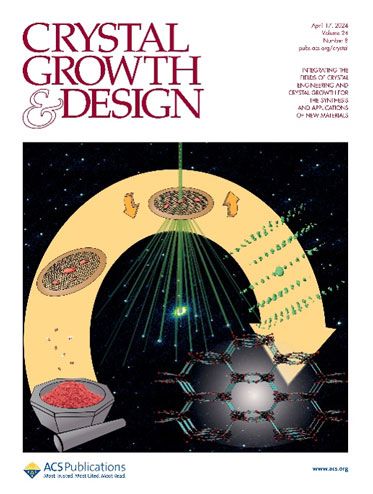
Papers IIT
A new paper of the NanED IIT group, came out recently on Journal of Crystal Growth & Design! The paper describes the mechanochemical synthesis of a novel MOF built from a bio-ligand that can be found in nature in edible plants: the protocatecuic acid. The MOF is synthesized with a completely green process avoiding any harsh solvent and using copper as metallic center. The mechanosynthesis produces a micro/nanocrystalline powder so the structure determination was only possible by employing the 3D ED technique. 3D ED allowed ab-initio determination of the MOF structure and also its dynamical refinement, which showed the presence of residual water in the channels. The MOF thermal degradation was studied through DSC and in-situ PXRD. Interestingly, after the thermal treatment, the sample, which seemed fully amorphous at PXRD, in the TEM revealed some crystalline residuals that thanks to 3D ED were determined to be a coordination polymer in which the MOF channels have collapsed to form a layered 2D structure. The paper was also awarded a journal cover.
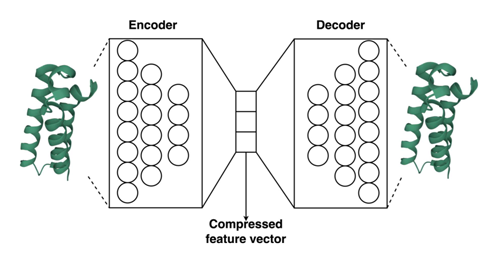
Papers UBA
A third paper from Senik Matinyan, NanED PhD student, came out recently on Acta Crystallographica A! Deep learning applications are revolutionizing the field of protein structure prediction by addressing some of its most significant challenges. Some of the architectures are extensively used in different steps of protein crystallography as well. The review from Senik examines how deep learning techniques help in producing high-quality protein crystals, monitoring their growth and extracting accurate structures from complex, noisy, and often incomplete diffraction data.
By leveraging advanced machine learning models, researchers can now analyze the intricate patterns within the data more efficiently, leading to breakthroughs in understanding protein structures and their functions.
The review also provides a brief history of deep learning, clarifies key definitions, and discusses the traditional machine learning methods applied in structural biology, highlighting the impact of these technologies. There is a chapter which discusses key details of the architectures as well.

Course IIT
From the 19th to the 21th of February David Waterman and Tarik Drevon of STFC (UKRI) NanED partner gave a course to IIT in Pontedera about how to use Diffraction Integration for Advanced Light Sources software, known as DIALS, for analyzing 3D electron diffraction data. Dials is a software specifically developed and optimized to analyze single crystal diffraction data on macromolecules collected at synchrotron stations. For its wide flexibility and continuous development, it can be easily adapted to be used with other diffraction data and recently it has been specifically modified to work on ED data. We tested together with the help of David Waterman how to analyze with DIALS the 3D ED data produced by NanED ESRs @IIT. David explained the workflow of DIALS from the data import to the final intensity integration step. All the 3D ED data collected at IIT could be positively analyzed and all the structures were successfully solved. During the course the possibility to use DIALS for integrating data coming from 2D materials, where a three-dimensional unit cell does not exist, has been also discussed. We envisaged the possibility to write specific scripts that will allow us to integrate the intensity of each spot as a function of the tilt angle for providing information on the structure of each layers and their stacking modalities.

Workshop CNRS
From the 6th to the 7th of December NanED PhD students met our industrial partners at Crismat-CNRS in Caen, France, for the NanED meet industry workshop. The students attended in advance a course on “ Key Skills and Interview Training” held online by Key2People for preparing themselves for a job interview. At the meeting our partner companies presented themselves, with a specific focus on their job opportunities and on the kind of skills they are searching for. All the talks were really job-oriented, reporting also specific examples of the personal careers of the speakers in their company and before. This helped the students to broaden their view on the job market outside academia, but also to directly experience real life cases from which to take inspiration for their proper careers. After, each student had the opportunity to attend two simulated job interviews with the companies. The companies gave feedbacks to the students at the end of the interviews. A member of HR office of Tescan revised their CV and pointed out weaknesses and strength of them, while the product innovation director of Amsterdam Scientific Instruments revised their motivation letters. It has been a fantastic experience for the students and a fruitful occasion for the companies to meet possible future employees. All the NanED supervisors and students would like to thank a lot Amsterdam Scientific Instruments, AstraZeneca, Codex International, DENSsolution, Eldico, Jeol, Nanomegas, Quantum Detectors and Tescan for being part of this meeting and for immersing themselves so well in the role.

FZU IIT JGU
The 4th December the Standardization committee of the NanED project met on line to discuss issues and improvements of the actual cif dictionary connected to crystal structures solved and refined with 3D ED data. The committee works in collaboration with our partner IUCr, the ruler of cif syntax, to adapt the actual structure of the cif to the new entry of 3D ED as the main tool for determining the crystal structure of nanocrystalline materials. The committee analyzed a report produced by NanED PhD students during the round robin on the test structures of epidote, natrolite and S-ibuprofen. The committee identified the need to insert a specific keyword for the beam geometry (precession, continuous rotation) and one for the diffraction theory used in the refinement (kinematical, dynamical). A new syntax should be developed for dynamical refinement, since the type of data is very specific and different from those used in x-ray diffraction based refinements, so the actual syntax is not suitable to describe this type of procedure. Problems to be faced concern the absence of Rint for estimating the quality of the reflections, and the presence of new parameters for determining the reflections to be considered in the refinement. Finally, the upper limit in the agreement factors should be made a little loosen in case of electrons since, especially for kinematical refinement, the values very often exceed the established x-ray limit.
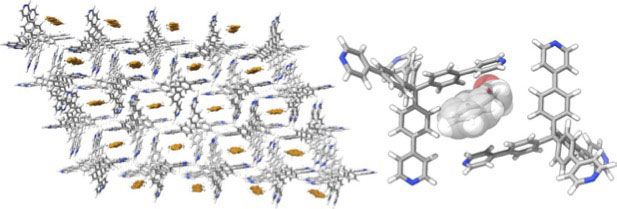
IIT
A new paper which is a collaboration between the IIT group and the Eldico Scientific NanED partner, came out recently on Acta Crystallographica B! The paper describes the structure determination of a novel mechanochemically synthesized supramolecular organic framework (SOF) with 3D ED data collected on an the Eldico ED-1 electron diffractometer. This is one of the first structures solved with this new innovative instrument. The authors were able to solve the structure of the SOF and to refine it dynamically. The dynamical refinement was carried out simultaneously on multiple data sets (three) and delivered two partially occupied molecule positions of the residual solvent (benzyl alcohol) trapped in the pores. 12 out of 16 independent hydrogens can be directly seen in different Fourier maps.
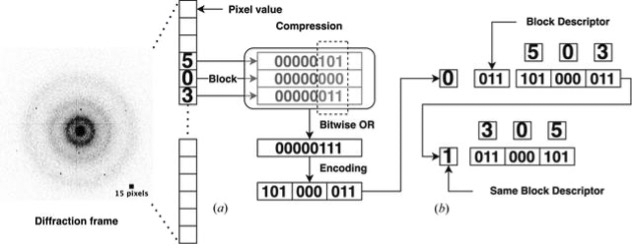
UBA
A second paper from Senik Matinyan, NanED PhD student, came out recently on Acta Crystallographica A! The paper introduces TERSE/PROLIX (TRPX), a novel lossless compression algorithm specifically designed for diffraction data in high-throughput crystallography, addressing the challenges posed by the significant increase in data volume. TRPX outperforms established algorithms like gzip, bzip2, CBF (crystallographic binary file), Zstandard(zstd), LZ4 and HDF5 with gzip, LZF and bitshuffle+LZ4 filters in terms of speed and compression rate, being 60 times faster than bzip2 and three times faster than LZ4. It compresses data to at least 15% of the original size and can handle up to 2000 electron diffraction frames per second using a single core on an Apple's M1 Max processor. The algorithm mitigates storage and transmission concerns and facilitates more efficient data analysis and interpretation. The TRPX compression/decompression code, custom TIFF library, and an ImageJ/Fiji Java plugin are open-sourced on GitHub and Zenodo under the MIT license.
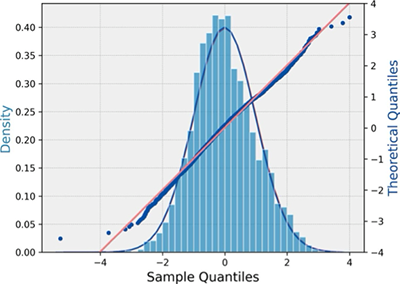
FZU
A new paper from FZU group, came out recently on Acta Crystallographica A! The paper describes a proper way to correctly estimate the error to assign to each integrated reflection of a 3D ED experiment. In fact, in the case of electron diffraction, the complexity of electron scattering that includes also dynamical effects, hampers a simple estimation of the integration error of the reflections based only on the standard Poisson statistics. The authors demonstrate that if the estimate of the standard deviation is modified in order to obtain a proper normal distribution of the integration errors, two goals are simultaneously achieved: the number of observed reflections is maximized and the refined structures are more accurate. At the same time a proper error model allows to identify which reflections can be considered as outliers to be excluded from data set. As test structures natrolite, L-alanine and (S)-(+)-ibuprofen have been chosen.
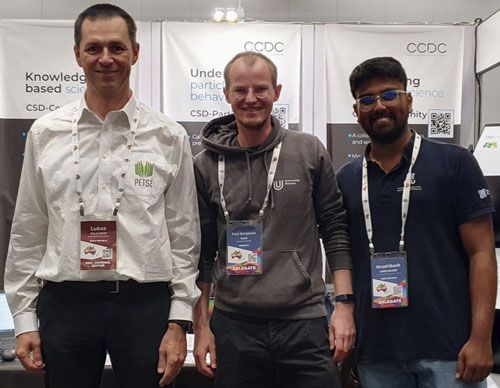
FZU
The Cambridge Crystallographic Data Centre (CCDC) has announced that the Cambridge Structure Database (CSD) has passed the milestone of 1.25 million expert-curated experimental crystal structures! This structure is a structure solved and refined with 3D ED by a NanED research team! It is the crystal structure of ibuprofen (CSD Entry: JEKNOC16) published in Acta Crystallographica A by Malak Khouchen, Lukas Palatinus et al. Among the other authors together with the NanED supervisor Lukas Palatinus, we can find also our ESRs Chintakindi Hrushikesh (in the picture together with Lukas and Paul Klar) and Ashwin Suresh. Lukas commented this achievement in an interview for CCDC:
“It is an unexpected privilege and pleasure to have helped to achieve such an important milestone for CSD and for the whole crystallographic community. I always illustrate the importance of crystallography to my students by reminding them that the number of published structures grows with the pace of about one structure every 10 minutes, day and night, 24/7. 1.25 million published structures is an amazing number, and I want to congratulate the whole team behind the CSD as well as to all fellow crystallographers who made this possible. I think it is also symptomatic that the 1.25 millionth CSD structure is a structure determined by 3D electron diffraction. I believe that the number of structures determined by 3D ED in the CSD will quickly grow in the near future.”
To this we can add that for sure 3D ED is one of the forefronts of crystallography and we are proud as NanED to be part of its development.
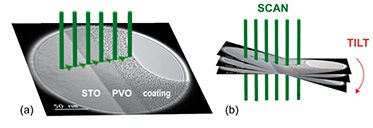
CNRS
A new paper from Sara Passuti, NanED PhD student, came out recently in Symmetry! The paper describes a new method of collecting 3D ED along a line for mapping fine structural variations with high spatial resolution. A method that the authors named SPET: Scanning Precession Electron Tomography. The method has been tested on a 35 nm thick perovskite 𝑃𝑟𝑉𝑂3(PVO) film deposited on a 𝑆𝑟𝑇𝑖𝑂3 (STO) substrate. As a proofs of concept, the authors wanted like to see if it was possible to monitor the thin film relaxation as a function of the distance from the substrate. The results are extremely encouraging. Tiny unit cell variations and structure deformations could be detected and they are in line with the expected phenomena inside the film. Remarkably the structure modification could be mapped with a spatial resolution between 2 and 5 nm!
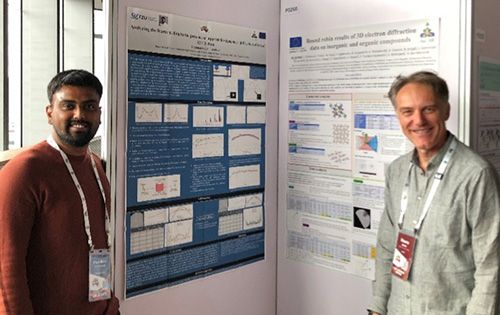
Workshops IIT UA FZU CNRS JGU
A strong participation of NanED to the IUCr2023 in Melbourne the most important conference on crystallography of the entire world. There has been talks by our supervisors: Xiaodong Zou on “Probing defects and disorders in nanoporous materials by electron crystallography”, Joke Hadermann on “In situ 3D ED in gas and liquid environments for following structural evolution during reactions”, Lukas Palatinus “Net atomic charges by dynamical kappa refinement against 3D ED data”. A fantastic talk by our PhD Erica Cordero-Oyonarte on ” Diffraction tomography for structural analysis of nanoparticles: a study of minimal size ad associated dynamical effects”. Plus several posters: one from our PhD Amirhossein Hajizadeh on “In situ 3D ED in liquid to study the structural transformation of functional materials during electrochemical reactions: challenges and progress”, one from our PhD Chintakindi Hrushikesh on “Analyzing the frame scaling in the presence of appreciable dynamical diffraction effects of 3D ED data”, and one from our PhD Angelina Vypritskaia on “ Deep learning-driven approach for crystal selection in serial electron diffraction”. Our coordinator, Mauro Gemmi, presented, for the entire project, the results of NanED 3D ED Round Robin on a poster titled “Round Robin results of 3D electron diffraction data on inorganic and organic compounds”. Finally our supervisor Hongyi Xu was one of the organizers of the satellite electron crystallography school in which several of NanED researchers were involved as teachers.
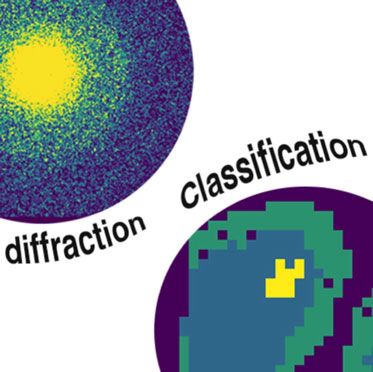
UBA
A new paper from Senik Matinyan, NanED PhD student, came out recently on Acta Crystallographica A! The paper describes a new way to identify single molecule electron diffraction patterns. While the study of a protein in a TEM is usually confined to single-particle analysis, single molecule electron diffraction has a better signal-to noise ratio and the potential to increase the resolution of protein models with respect to other techniques. However only a minority of the collected electron diffraction data are useful, since the chance of hitting the protein of interest with a narrow beam is very low. This calls for a selection method that is able to recognize which ED patterns carry the sought information and which ones instead should be discarded. Senik and coworkers proposed to use specific machine learning algorithms for this purpose. As proof of concept, they were successful in efficiently distinguishing between the diffraction coming from the amorphous ice and from the carbon support. Although limited to a simple case, this approach exploits inherent characteristics of narrow electron beam diffraction patterns and can be extended for protein data classification and feature extraction.
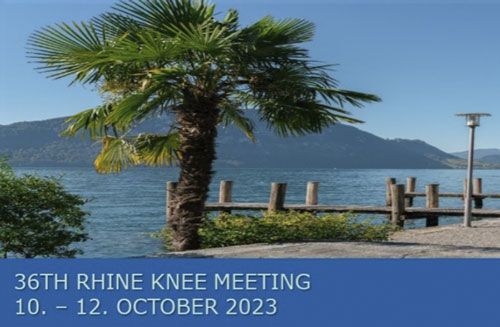
Workshops UBA
NanED is partner of the Rhine-Knee Regional Meeting on X-ray Crystallography of Biomacromolecules ("Regio Meeting"), which has been a valuable platform for young scientists to engage in discussions with experts in the field of structural biology since its initiation in 1987 by Profs. J.N. Jansonius, G.E. Schulz, and D. Moras. Over the past 25 years, the meeting has maintained its informal and personal character while growing into an international event that showcases new macromolecular structures and innovative methods at a high level.
This year's Regio Meeting will be held from October 10th to 12th, 2023, at Seminarhotel Rigi in Weggis, Switzerland.

Workshops UA
From the 30th to the 31st May 2023 at the UAntwerpen was organized by the Special Interest Group on Electron Crystallography (SIG04) of the European Crystallography Association (ECA) a workshop on Electron Crystallography to present the most recent advances in the field.
Most of NanED PhD students and researchers attended to the meeting and present their work in accepted oral communication. Here is the list of their oral communications:
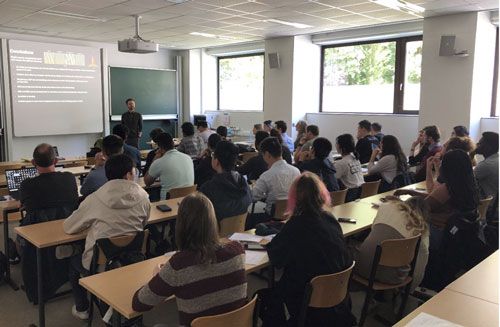
Workshops UA
From the 1st to the 2nd of June 2023, the NanED project had its third Workshop. The Workshop III have been held in Antwerpen by UAntwerpen at the EMAT institute.
The workshop main goal was to teach to NanED PhD students how to use the state of art TEM imaging techniques and how to combine them with the most sophisticated analytical methods available in a TEM. International experts of the EMAT institute (Prof. Thomas Altanzis, Prof. Hosni Idrissi) were explaining how nowadays it can be reached sub atomic resolution in both TEM and STEM imaging. Specific subjects like ptycography (Prof. Timothy Pennycook), image tomography at the atomic resolution and image quantification (Prof. Annick De Backer) were discussed in details. For the analytical part an introduction to TEM spectroscopy was delivered by Prof. Jo Verbeeck.
The students could also learn which are the best strategies and techniques to write a project grant. This lecture was delivered by Prof. Joke Hadermann one of NanED supervisors.
Several local students and researches joined the school making the lectures and the discussions very participated.
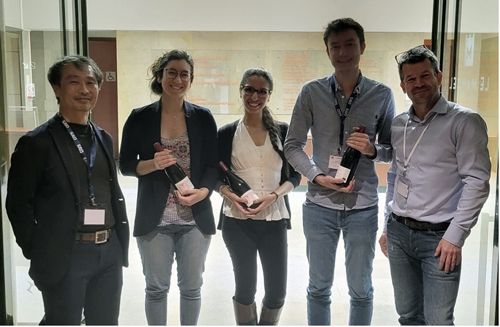
CNRS
Sara Passuti won the Poster Prize at the International Workshop on Thermoelectrics Materials IWT2023 that took place in Caen (FR)
She presented her work about "3D Scanning Precession Electron Diffraction Tomography of nanodomains in thermoelectrics".
Starting from the results obtained by 3D ED on interconnected Enargite-Stannite Cu2+xMn1-xGeS4 nanocomposites that we find in the recent publication of Pavan Kumar V. et al (2022), she explored the possibilites for a more detailed analysis of these thermoelectric samples by combining scanning electron diffraction techniques, such as orientation mapping and Scanning Precession Electron diffraction Tomography (SPET). In particular, by means of this last technique, she's investigating the possibility of an accurate structure solution of different nanodomains in the sample with a single acquisition.
The data were acquired with the TEM facilities at Crismat (JEOL F200 200 kV), and in collaboration with TESCAN with the new TENSOR 100 kV Analytical 4D-STEM
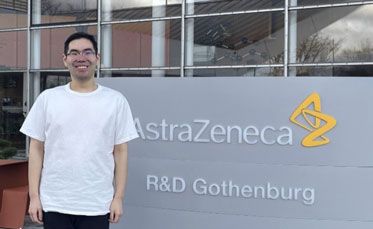
SU AZ
Lei Wang, NanED PhD student (ESR 10), is taking his first secondment at AstraZeneca, Göteborg. This secondment aims to study protein-ligand interactions and experience the real life of an industrial company.
In AstraZeneca, Lei Wang learned how to do drug soaking, crystal fishing and ligand refinement based on large crystals and synchrotron data under the supervisor of Helena Käck. A new protein crystallization method developed by SU was also employed to make small protein crystals in the lab, and MicroED data was collected.
Life in AstraZeneca is pleasant. The working time is usually effective and people in AstraZeneca have a good balance between work and leisure.
Thanks to Helena’s kind help, everything worked out well!
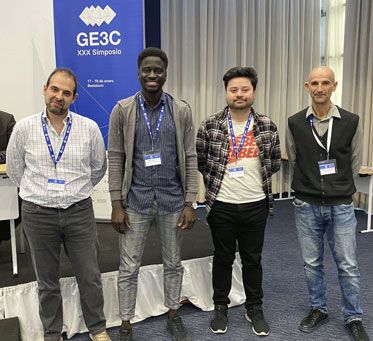
IIT
Moussa Faye, NanED PhD student working at IIT in Pontedera, Italy on electron nanocrystallography of heterometallic MOF, won the second-best poster prize at GE3C XXX Simposio in Benidorm, Spain! Moussa’s poster was about “Structure determination of Metal-Organic Frameworks using 3D Electron Diffraction (3D ED)" and describes a dedicated procedure of 3DED data collection on beam sensitive MOF and the successful structure solution of two new MOF, one monometallic and one heterometallic, using this technique. The poster is a collaboration between IIT, the University of Parma, and the group of Prof. Carlos Martì-Gastaldo of ICMol Spain. Well done, Moussa!
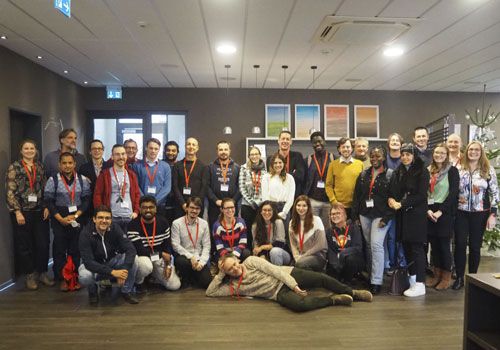
Workshops JGU
From the 6th to the 8th of December 2022, the NanED project had its second workshop, held in Mainz at the Johannes Guthenberg University.
The workshop's main goal was to teach NanED PhD students how to use powder x-ray diffraction (PXRD) as a complementary tool to 3D ED. The students learned how to solve structures using PXRD and how to refine them with the Rietveld method. As a second topic, the workshop dealt with the problem of investigating disordered structures. The students had the possibility to learn how to treat diffuse scattering both in PXRD and 3DED using the most novel PDF approaches. The workshop hosted several external experts in PXRD and diffuse scattering such as R. Dinnebier of MPI Stuttgart, M. U. Schmidt of Frankfurt University, N. Barrier of CNRS Caen, J. Plasier of Elettra Sincrotrone Trieste, R. Nieder of Erlangen University, E. Schmidt of Bremen University, C. Cuocci of Istituto di Cristallografia CNR Bari, S. Plana Ruiz of University Rovira I Virgili Tarragona.
The workshop was designed with theoretical lectures in the morning and practical sessions in the afternoon, where the students could learn how to use the most advanced software for PXRD data analysis and had the opportunity to visit the 3D ED facilities of JGU
In order to expand and improve their soft skills, the students followed a lecture about the intellectual properties and the patent in science held by T. Einfeld of BASF.

IIT
During the IIT digital festival “Science is ready” broadcasted live on Linkedin the 21st of October, our coordinator Mauro Gemmi has discussed, together with other two IIT PIs, Annamaria Petrozza and Virgilio Mattoli leading the PERSEPHONE and the 5DNanoprinting projects respectively, about the most recent advances in realizing new materials that may have a great impact on our life. Mauro had the opportunity to explain to a wide audience the targets and the aim of our project with a strong accent on its importance on the formation of a new generation of scientists that will bring forward the development of electron crystallography. The discussion was moderated by Valeria delle Cave, head of the Foreign Press Office and Communication of competitive projects Office at IIT.
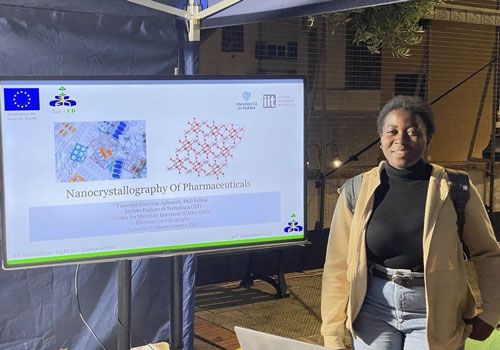
IIT
NanED PhD students Vincentia Agbemeh and Moussa Faye presented their PhD projects to the wide public in an event organized by IIT in Genova for the 2022 European Researchers’ Night.
Vincentia and Moussa had to explain to people from young children to adults what they do, why their work is important and what it will bring to our everyday life. A difficult task that Vincentia and Moussa carried out successfully. For them it was a really rewarding experience. Well done!

CRISMAT
The first paper involving the work of one of NanED PhD students is already out! A research group led by CRISMAT-CNRS laboratory synthesized a series of self-doped compounds Cu2+xMn1-xGeS4 through Cu substitution to Mn. Using a combination of powder X-ray diffraction, high resolution transmission electron microscopy and precession-assisted electron diffraction tomography, they evidenced that the materials are composed of interconnected enargite- and stannite-type structures, via the formation of nanodomains with a high density of coherent interfaces. The complex crystal chemistry of such nanocomposites rises the issue of the role of the two structures and of their interfaces in the mechanism governing their electrical and thermal conductivities. Sara Passuti (ESR12 working at CRISMAT CNRS in Caen France) has analyzed and identified the structure of both stannite and enargite nanodomains using 3D ED in these complex intergrown nanocomposites. The paper is just out on Angewandte Chemie. Well done Sara!

CRISMAT
Great participation of the NanED team at the 33rd European Crystallographic Meeting (ECM33) held in Versailles France from the 23rd to the 27th of August 2022. Several supervisors were involved in the congress as chairs and speakers in different sessions and NanED PhD students presented 9 posters in different sessions from electron crystallography to metallorganic framework, from organic crystals to macromolecules. Their posters have attracted a lot of interest and discussion. The participation in the congress has been very fruitful with the opening of possible collaboration.
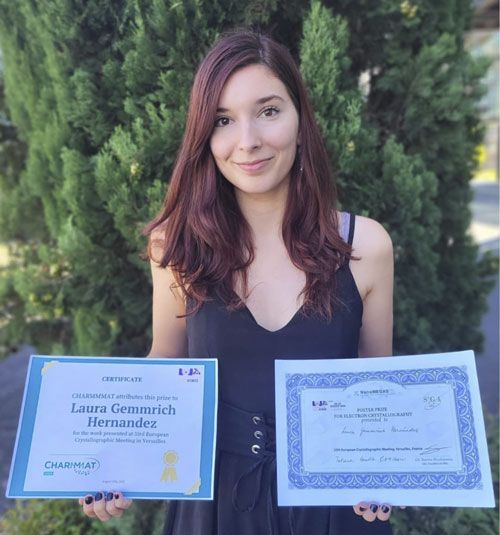
JGU
Laura Gemmrich Hernandez, NanED PhD student working at Johannes Guthenberg University in Mainz on structural investigation of cement hydration mechanism by electron crystallography, won two poster prizes at ECM33! One in the electron crystallography session shared with the other NanED PhD student Sara Passuti offered by Nanomegas and another offered by CHARMAMAT LABEX in the field of advanced and functional materials. Laura’s poster was about "Structure solution using 3DED of beam and vacuum sensitive Metal Organic Frameworks" and describes the structure modification of two new porous metal phosphonates built by an organic acid linker in the TEM vacuum. Thanks to 3D ED it has been possible to determine their structures during the transformation process induced by the TEM vacuum and by the electron beam. Congratulation to Laura!
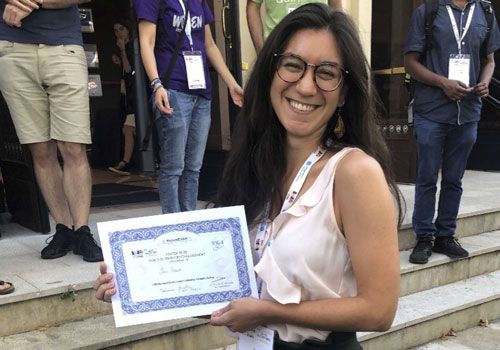
CRISMAT
Sara Passuti, NanED PhD student working at CNRS in Caen on electron crystallography of nanodomains in functional materials, won a poster prize at ECM33 in the electron crystallography session offered by Nanomegas! Sara’s poster was about “3D scanning precession electron diffraction analysis of nanodomains in thin films” and describes a procedure about how collect 3D ED data of structure solution quality across a thin film. This procedure should allow to determine the modifications of the crystal structure in different portion of a thin film. Congratulation to Sara!
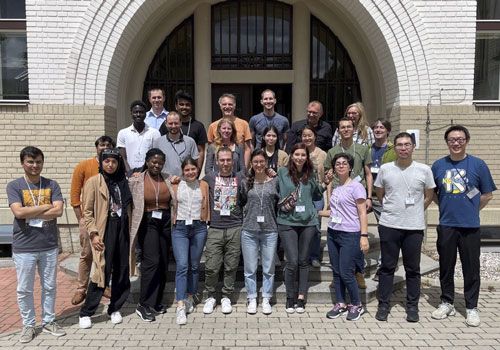
FZU Workshops
From the 25th to the 27th of May 2022, the NanED project had its first Workshop, held in Prague at the Institute of Physics of the Czech Academy of Sciences.
The workshop's main goal was to teach NanED PhD students how to collect reliable 3D ED data and how to process these data for a successful structure solution and refinement. The workshop was divided into morning theoretical sessions and afternoon practical sessions to learn how to use all the available structure analysis software for 3D ED. Together with most of the NanED supervisors, we had two invited speakers from outside the project, Prof. Tim Gruene from Vienna University a crystallographer expert in the use of SHELX and Dr Gerhard Hofer of Stockholm University a master in protein crystallography. It was the first we gathered together in person and it has been a fantastic experience for all of us.
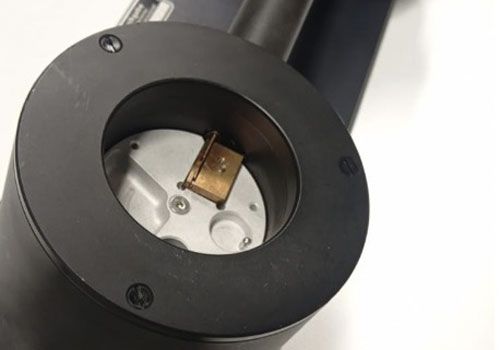
JGU
Working on beam-sensitive and hydrated samples is a complex process. Therefore, Laura Gemmrich Hernandez (ESR08) is currently focused on optimizing the data acquisition routines and sample preparation to get quality data that can lead to the structure solution of such materials.
Currently, the project is focused on microscope management, cryoEM, and data processing of many different types of challenging, organic as well as inorganic, samples; such as hydrated, beam sensitive, and disordered materials. The cryoEM training has included a visit to the BASF in Ludwigshafen (Germany) to learn and practice the vitrification and cryotransfer procedures for these types of samples.
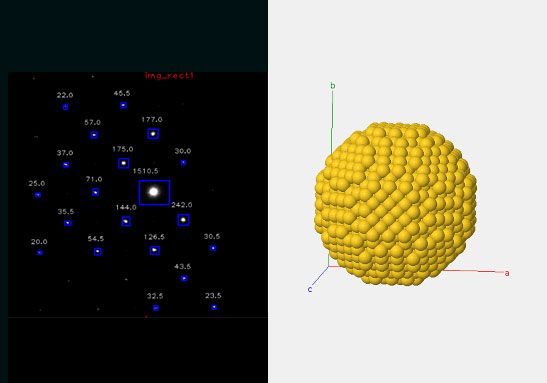
CRISMAT
Establishing new crystal tracking routines requires a deep understanding of the hardware, software and 3DED technique and its limitations. Due to that, the work of Marco Santucci (NanED ESR9) is focused in mastering the microscope, with a special eye on the “hidden parameters” that allow the microscope to work. This deep knowledge is necessary to figure out how to handle a basic 3DED experiment, translate it in an automated and technically flexible approach by scripting as well as to improve it.
Marco is focused in the management of the machine, the data collection and processing of organic and inorganic samples, due to their intrinsically different beam stability. Regarding the scripting, Marco is learning Python and DigitalMicrograph© in order to be flexible and synchronize every element of our TEM machines during the data acquisition. Thanks to these acquired competences, Marco will develop a routine to set automatically the best eucentric height, a key parameter for sample mechanical stability during our experiments. At the same time, Marco is also learning how to model disordered crystals and simulate their diffuse scattering using DISCUS, thanks to a visit to the Prof. Rheinard Neder at the FAU in Erlangen.
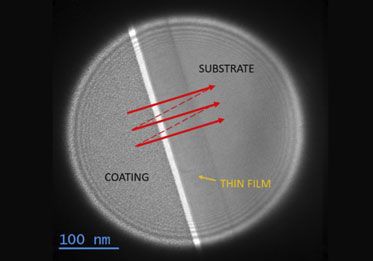
CRISMAT
The current objective in the context of Sara Passuti’s (ESR12 @ CNRS) research project is to implement new strategies for diffraction dataset acquisitions for thin films. Differently from a classical Rotation Electron Diffraction (RED) experiment, the beam is scanned across a pre-defined area going from the coating to the substrate of the thin film or vice versa for every tilt angle.
This way, differences in the lattice parameters in distinct areas of the sample could be highlighted and different domains could be identified.
The main issues concern the optimization of the dataset acquisition protocol, making it faster and more efficient, as well as the sorting of the acquired patterns in order to have separated datasets to analyze for different areas of the sample.
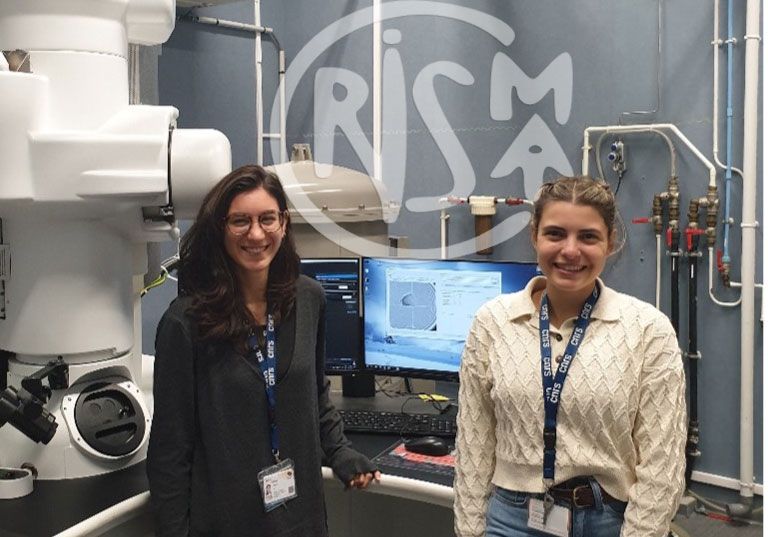
CRISMAT
The PhD students Sara Passuti (left) and Erica Cordero-Oyonarte (right) just started at Crismat in Caen their NanED adventure. Sara will work on the project, “Electron crystallography of nanodomains in functional materials” focusing on materials with amazing properties whose crystallography is extremely difficult due to too small ordered domains. Meanwhile, Erica's project is “Electron crystallography of nanoparticles” which involves studying the limiting size of a 3D ED experiment.